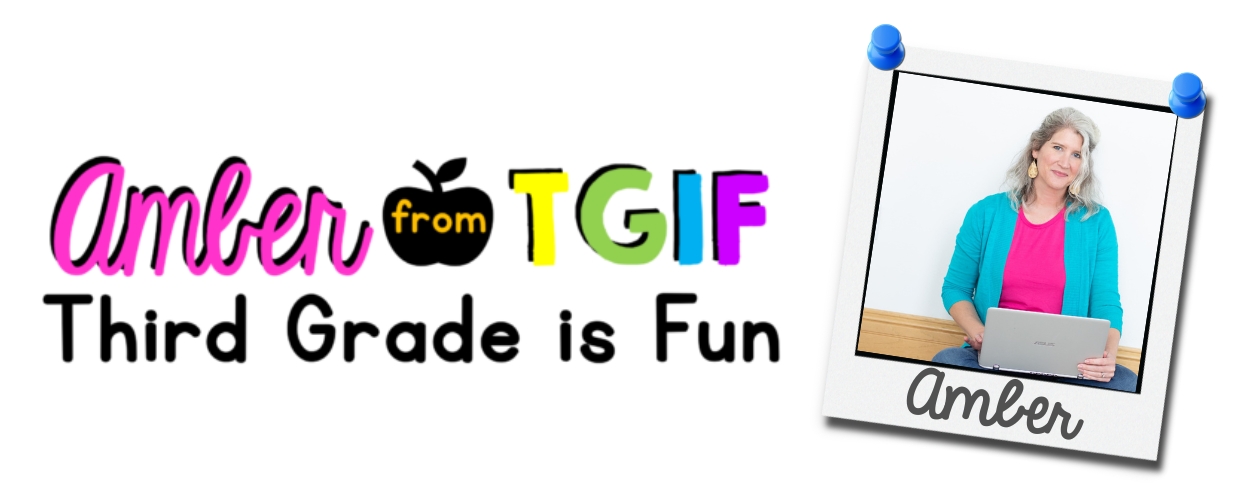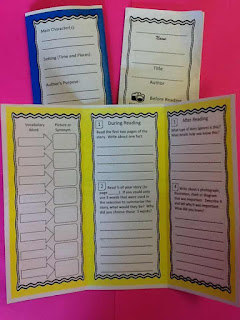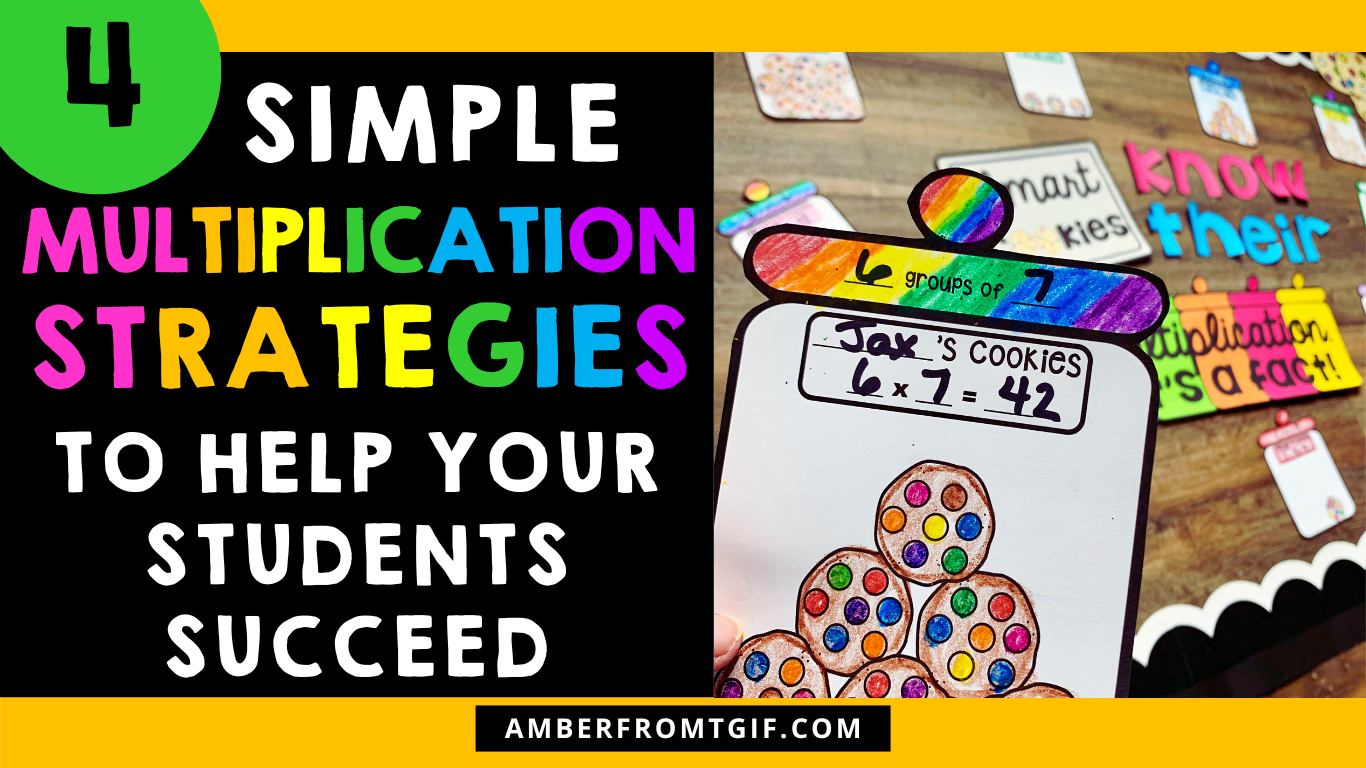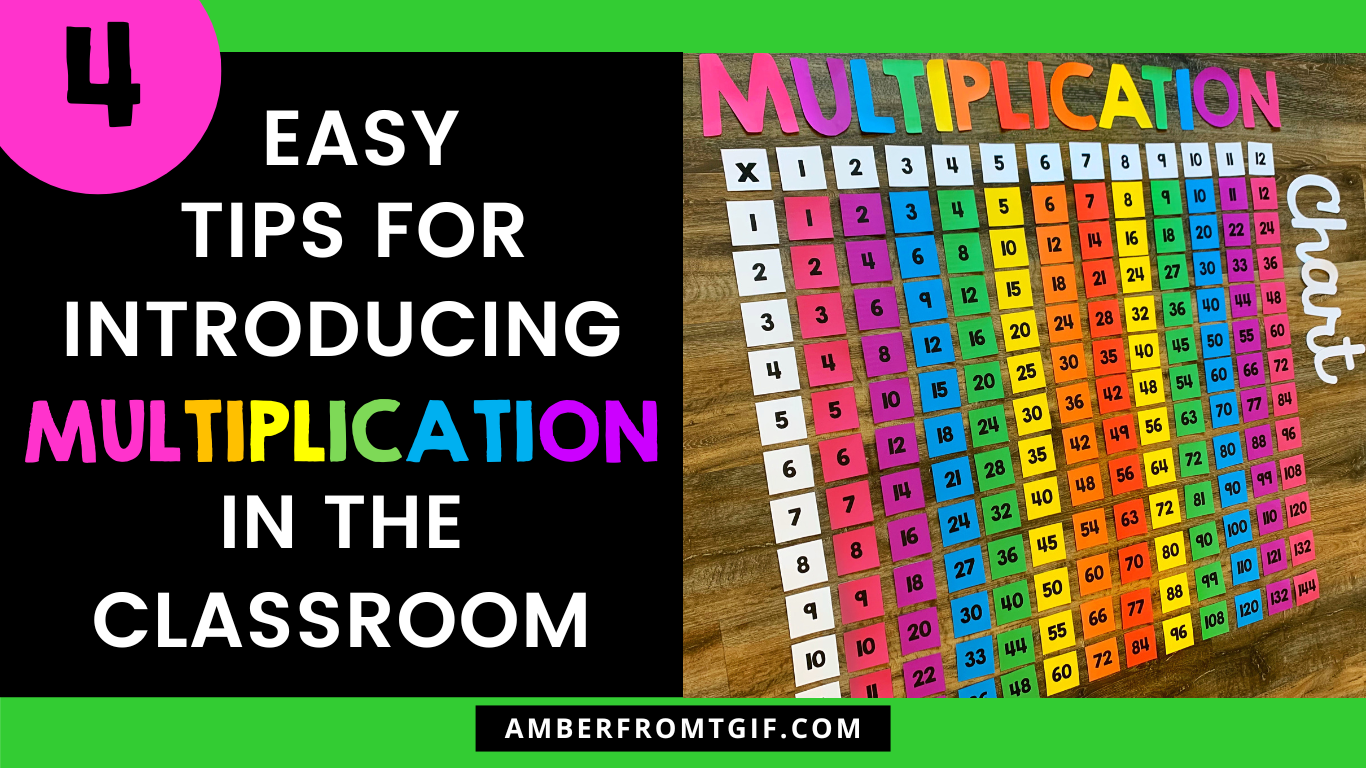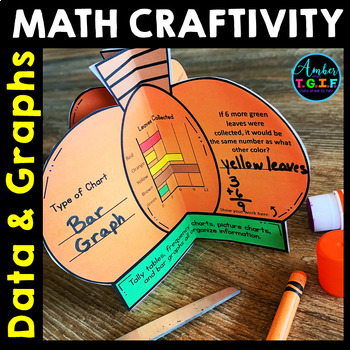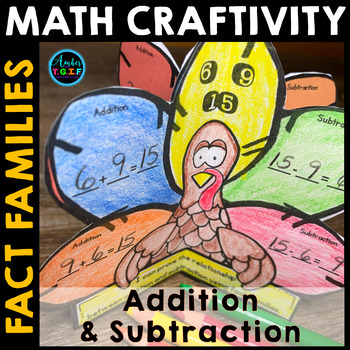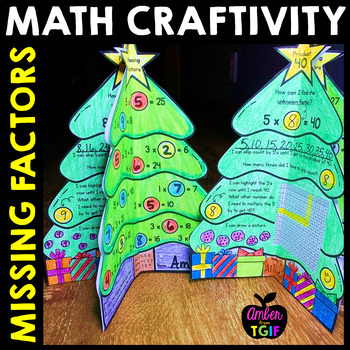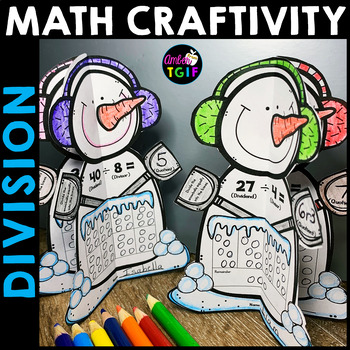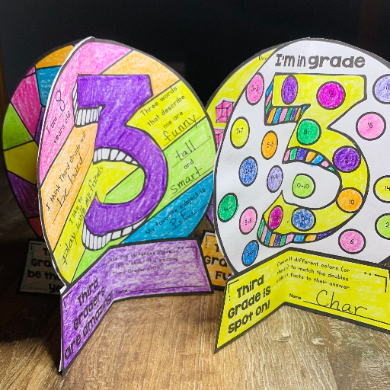So you have to use the basal reader….. Well, if you have to use it, then rock it!!!! I actually enjoy the structure my basal reader provides and yet I love incorporating all kinds of fun, interactive activities with each story.
Here is a run down for how I schedule my Reading Street basal reader week. I focus on one main area a day (although I do other things each day):
Monday – Vocabulary Focus
1. Introduce vocabulary using phonics rules.
I will show one word at a time and cover all but the first letter or two. I will ask for three words “it could be.” Maybe I show the letters “st”. They guess “street, stunt, and stinky”. Then I uncover the next letter “str”. It could be “street” and so they guess two more words. We keep going until they guess the word which might be “straight.” This is a great way to intro vocab and incorporate phonics for my strugglers. We can talk about the “ai” giving the long a sound and “gh” often being silent.
2. Vocabulary words as “sight words”
a. “Round the Room” – Line your class up and you stand facing the front of the line with vocabulary cards in hand. The first student reads the first card and then walks the perimeter of the room. The second student reads the second card and follows the first student around the perimeter of the room. Third student – third card. Keep repeating words until each student has read a card. This is a quick, fast paced, get up and moving activity. I don’t spend long on it at all!
b.. “Swat it” – Group your class into 4 groups and give the first student a fly swatter. Each team needs a different color. Spread out your vocabulary cards on the floor. Call a word and the first one to swat the correct word gets a point. Challenge the class after a few rounds by adding a level of difficulty. Now give the definition or synonym.

I try to mix it up a bit and use different types of organizers so they don’t get bored, but this gives the students a chance to internalize the meaning of each word and how to use it in context. Here are 3 vocabulary graphic organizers that we use in the classroom.
4. Make predictions about the story with vocabulary
After introducing the vocabulary and learning the title of our story. We make predictions on what we think the story will be about using just those two clues (vocabulary and title). This is a perfect writing opportunity. You can have your students write down their predictions or even have them write a short story line.
We usually read part or all of the story in class after several of our vocabulary activities.
Tuesday and Wednesday – Story Elements, Skills and Comprehension
Well….this is a large topic! On these two days, we usually read through all of the story or I will pick a section to focus on. (If the story is long, we might read half on Tuesday and half on Wednesday). I use the focus from the book as my focus for the week. There are usually 2-3 skills I might focus on.
Partner Read and Discuss
DON’T make your job any harder than it already is! Use those questions that are posed throughout the teacher’s manual. Often I will partner my students and have them read one page with their partner. As they are reading, I will write one of those questions from the teacher’s manual on the board. When students are finished reading, they are to discuss it with their partner. To keep them accountable, I may randomly call on two groups to share their answers or I will have them write it on a white board or piece of paper. Quickly share some of their answers and add in your own ideas. Now move to the next page and as they are reading, write a new question up on the board. (Yep, you can collect those and give participation points. I beg of you though, for your sanity, do NOT spend too much time grading them! You will get bogged down and your time is too valuable to put too much time into it. Give 2 points for great effort. 1 point for some effort and 0 points for nothing!)
Skill and Comprehension Foldables
You can simply take a plain piece of paper and fold it into halves. Let’s say the focus is making generalizations and author’s purpose. Have the students write the title and author on the cover (first page). On the inside, have them write author’s purpose at the top on the second page and making generalizations on the third (inside pages). Underneath each you can write definitions of each (this should be inside your teacher’s manual). Near the bottom you can write one question from the teacher’s manual with this focus and have the student’s answer it. Need something to leave behind for a substitute that makes your life simple? Try these pre-made skill and comprehension foldables! Easy!
Thursday – Center Review
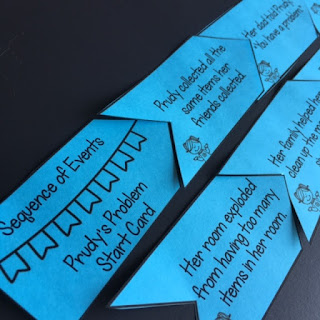
Sequence of Events (I do this for most all fiction stories)
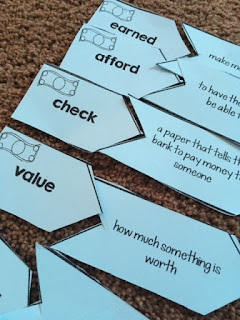
Character Match
I will write the characters’ name from the story (one on each card) and then I will write a quality or action of each character (one on each card). Have the students try to match them up. I will write matching numbers or symbols on the back to make them self-checking or your can make an answer sheet that they can get from you when they show you they have matched to the best of their ability.
Vocabulary Match
Well this is really the same as the character match set up, but you can see how it works in my classroom here:
Would you like to try the sorts out for free? You can receive a whole unit for free to try in your centers, RTI, or whole class by e-mail right now!

I will often use painter’s tape and set up a T-Chart. Write fact on one index card and opinion on another. Seriously, make this next step as easy as possible. Copy about 10 sentences out of the book – enlarge them on the copier and cut out those sentence strips! Make sure some of the sentences are fact and others are opinion. Have the groups sort them.
Examples
Fact – Lox is a smoked salmon.
Opinion – Pablo’s mother makes the best pan dulce in town.
Writing Station
Choose a question from the teacher’s manual to have them respond to. Also there are usually 3 questions for the students to respond to at the back of the story in the student edition. You could also do a “would you rather” writing activity. “Would you rather be _____ (main character’s name) or _______ (a secondary character) and why?” You could also do a “prove it” activity. Pose a question, have them respond to it, then find a quote out of the story that “proves it” and then they must end with their own thoughts.
I have some already made centers prepared and I am currently working on making some of my “homemade centers” into TpT resources. If you want something already premade, check out my Reading Street supplements on TpT.
Friday – Review and Test Day
Sometimes we review before the test and other days we don’t. Here are a few links that I sometimes use on Friday or I may use them other days during the week. I hope you find some of them helpful. Warning: If it is a review game, some teachers use the exact questions that are one the test. If you can modify them some, I highly recommend it.
Kahoot – This link explains, but basically this is like a game show! You can search for the reading story you are on. I promise there are lots of activities.
Rags to Riches (Prudy’s Problem for example) – This is like “Who Wants to be a Millionare” but requires Adobe Flash Player. Just search “Rags to Riches” in Google and then the story title. You will find several!
Read Alouds on You Tube – Just about every story is on You Tube. Some of the reading quality is fair and others – not so much. But, if you don’t have the books on CD, this is seriously a life saver when you have a sore throat or want to set up a listening station!
Have any questions? Connect with me on Facebook! I’d love to answer them for you.
